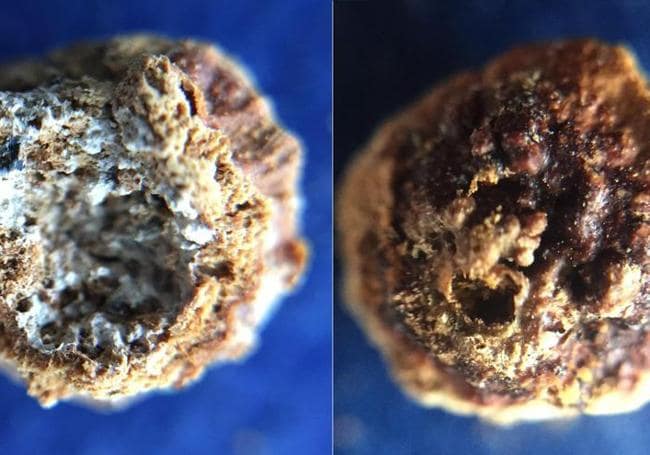In a remarkable archaeological discovery, a 2,000-year-old quartz bottle, found in a Roman burial site in Carmona, Spain, has provided a unique olfactory insight into ancient Rome. While the unsealed flask initially lacked a distinctive aroma, chemical analyses revealed the presence of patchouli, a scent commonly associated with modern perfumes. This revelation challenges previous assumptions about the olfactory preferences of ancient Romans and sheds light on the luxury and cultural significance of perfumes during this era.
The Unearthed Relic:

Discovered in 2019 within an egg-shaped lead case, the quartz bottle was a luxury object even in Roman times due to the difficulty of shaping quartz. Its tiny size and exquisite craftsmanship already made it a rare find at the burial site, but its sealed and well-preserved state added to its uniqueness. The flask was tightly sealed with a dolomite top coated in a tar-like substance identified as bitumen. Inside the jar, a solid mass was found – the preserved original content of the bottle.
Patchouli in Ancient Rome:

Laboratory analyses conducted on the flask’s contents revealed an unexpected ingredient: patchouli. The chemical composition of the perfume included patchouli and vegetable oil. Patchouli, derived from the Pogostemon cablin plant in Southeast Asia, was likely introduced to Rome through extensive trade networks. This discovery marks the first time the source of an ancient aroma has been conclusively identified, challenging previous assumptions about the scents prevalent in ancient Roman society.
Preservation Techniques:

The key to preserving the patchouli’s chemical signature lay in the bitumen seal. This dark substance not only kept the fragrance contained within the bottle but also trapped the perfume molecules through a process called adsorption. Similar to carbon filters in gas masks, bitumen behaves like carbon, making it an effective adsorbent for organic compounds. The tomb’s extraordinary preservation, characterized by darkness and closure, played a crucial role in protecting the perfume over the centuries.
Implications and Future Research:


The discovery of patchouli in a 2,000-year-old perfume bottle contributes to a growing trend of reconstructing multidimensional aspects of ancient life, including sounds and smells. Researchers suggest that this finding could offer valuable insights for groups and companies attempting to recreate ancient perfumes. However, the study clarifies that the use of such luxurious scents in ancient Rome was likely limited to the elite class, emphasizing the social and economic status of the perfume’s proprietor.
Unveiling Ancient Luxury:

While the presence of patchouli suggests a wealthy proprietor who could afford exotic essences and costly jars, it remains unclear whether this perfume was intended for daily use or held a spiritual or funerary significance. The location of the unopened bottle inside a funerary urn suggests a more intimate gesture, possibly meant for personal use rather than public display. Historians speculate that patchouli may have been linked more closely to the funerary world than to daily life, highlighting the intricate relationship between luxury, society, and ancient burial practices in Rome.